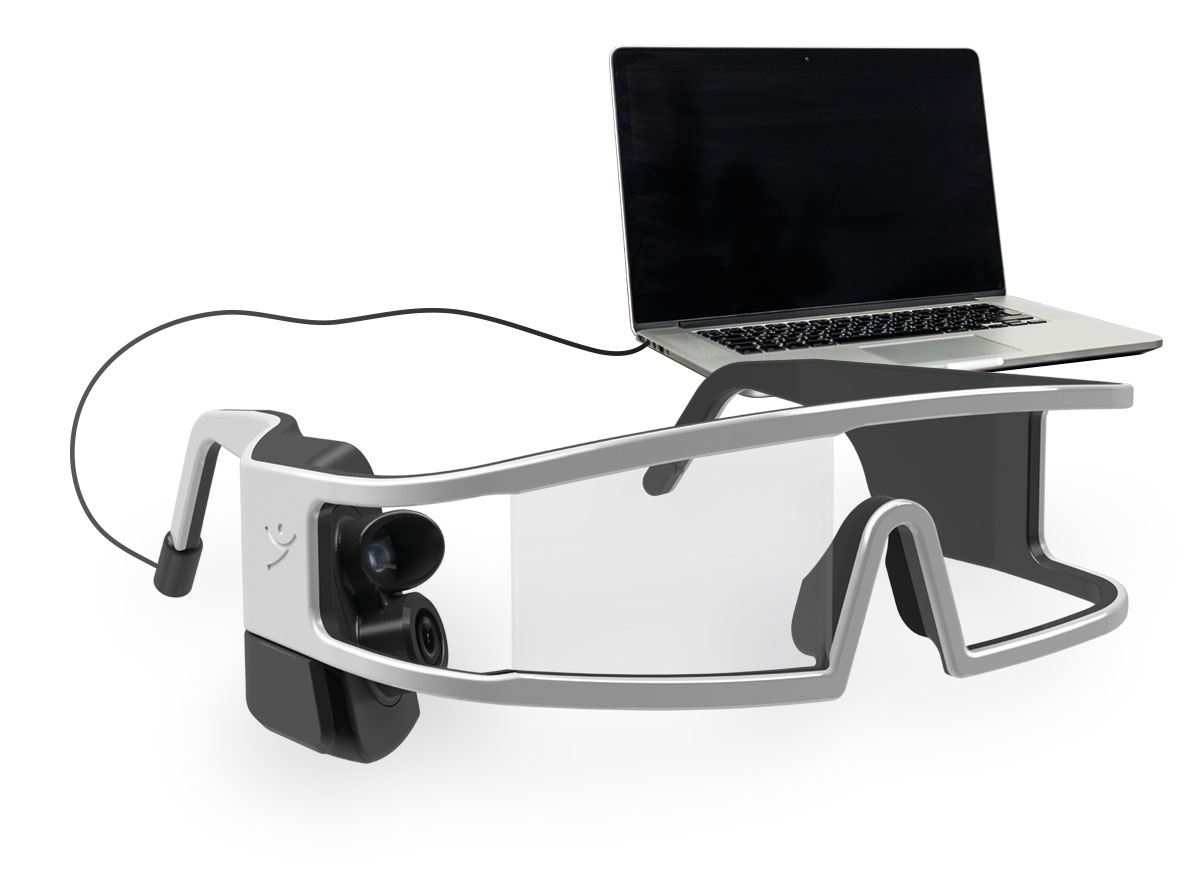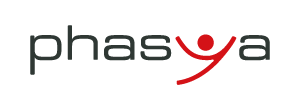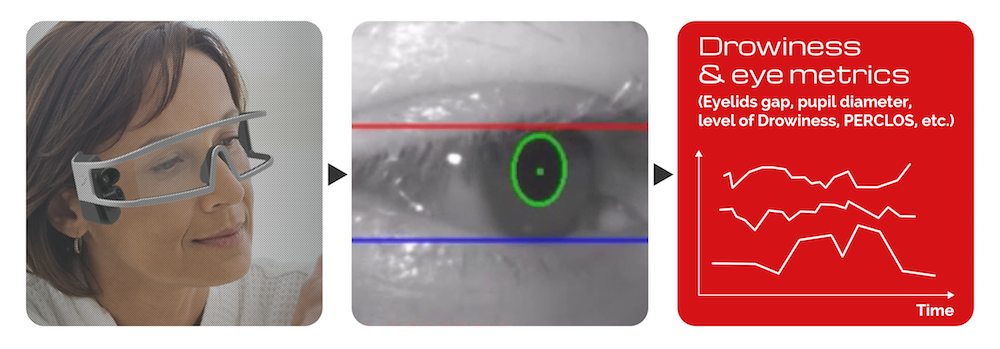
The Drowsimeter R100 is a complete easy-to-use solution enabling researchers to measure objectively, automatically, and accurately drowsiness and eye metrics.
Besides its validated measurement of drowsiness, the Drowsimeter R100 is also the first product that combines the accurate and high frequency (120 Hz) measurements of eyelids gap, pupil position, and pupil diameter.
The Drowsimeter R100 consists of the Phasya Glasses, a laptop, and the Drowsilogic software.
A module for adding corrective lenses to Phasya Glasses is available from January 2019.
You can purchase or rent the Drowsimeter R100.
Description
The Drowsimeter R100 uses images of the eye acquired at 120 Hz by a high-speed camera integrated into glasses to provide automatic, objective, and real-time measurements of several drowsiness and eye metrics in most lighting conditions. The level of drowsiness is calculated from several ocular parameters related to eyelids movements (i.e. blinks) and eyeball movements (i.e. saccades).
The ergonomics and the high-frame rate of Phasya Glasses ensure accurate and continuous measurements without disturbing the user. Our easy-to-use software (setup and calibration in less than one minute) - Drowsilogic - allows researchers to visualize and export all the data.
The standard version of Drowsimeter R100 outputs the following data:
- Drowsiness metrics: Level of Drowsiness (from 0 = fully awake to 10 = fully drowsy), PERCLOS 70, mean blink duration, blink frequency, percentage of LEYECLOS (= long eyelids closure), mean LEYECLOS duration
- Eye metrics: Eyelids gap, pupil position, pupil diameter
- Eye images
The Drowsimeter R100 can be adapted to your own needs and applications. For instance, specific ocular parameters related to eyelids movements, eyeball movements, and pupil diameter can be provided upon request.
Validation
The technologies used by the Drowsimeter R100 are scientifically validated.
- The algorithms for extracting eyelids positions and pupil position are validated against manually annotated positions on 86,000 eye images from more than 200 persons.
- The level of drowsiness is validated against several scientific references. These references are the Psychomotor Vigilance Test (PVT), the Standard Deviation of Lateral Position (SDLP) in driving simulator, and the Karolinska Drowsiness Score (KDS) based on polysomnography (EEG and EOG).
- The Pearson correlation coefficient between the indicators of drowsiness in the electroencephalogram (EEG) and the level of drowsiness determined by the Phasya’s technology is higher (i.e. better correlation) than the Pearson correlation coefficient between the indicators of drowsiness in the electroencephalogram (EEG) and the PERCLOS.
Publications related to the results obtained while developing the technology used by Drowsimeter R100:
- François C., et al. (2017). Relationship between brain activity and ocular movements during wakefulness and drowsiness. World Sleep Congress 2017, Prague, 2017
- François C., et al. (2016). Objective drowsiness monitoring to assess fitness for duty. 23rd Congress of the European Sleep Research Society, Bologna, 2016
- François C., et al. (2016). Tests of a new drowsiness characterization and monitoring system based on ocular parameters. International Journal of Environmental Research and Public Health, 13(2), 174
- François C., et al. (2014). Evaluation of the performance of an experimental somnolence quantification system in terms of reaction times and lapses. 36th Annual International Conference of the IEEE Engineering in Medicine and Biology Society, Chicago, IL, 2014, pp. 5820-5823
- Wertz J., et al. (2014). Validation of a new automatic drowsiness quantification system for drivers. 5th International Conference on Applied Human Factors and Ergonomics (AHFE), Krakow, 2014.
Customer testimonials
"Drowsimeter R100 is an innovative and reliable tool to monitor the alertness through continuous real-time measurement of ocular parameters, and has strong potential for use in the laboratory as well as the field study."
Prof. Chang-Ho Yun, MD (Dpt. of Neurology, Bundang Clinical Neuroscience Institute, and Sleep Disorders Center, Seoul National University Bundang Hospital).
"The Drowsimeter R100 is a comfortable device, easy-to-use, that enables me to record multiple ocular parameters in population of severely brain-injured patients. A key feature is that it provides reliable data even when the person is moving."
Camille Chatelle, PhD (Coma Science Group, GIGA Consciousness, University & University Hospital of Liège || Laboratory for NeuroImaging of Coma and Consciousness, Dpt. of Neurology, Massachusetts General Hospital, Harvard Medical School)
"The Drowsimeter is simple to use and fast to set-up with little to no added burden to the participant. It’s a flexible solution can easily be adapted for any situation where the investigation of attentional fluctuations over time is important, such as in the studies that I'm conducting about the association between mind-wandering and task performance."
David Stawarczyk, PhD (Dynamic Cognition Laboratory, Dpt. of Psychological and Brain Sciences, Washington University in St. Louis)

